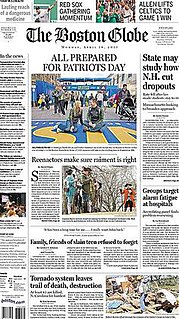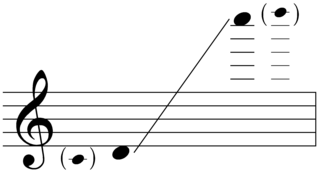The Cello Concerto No. 1 in E-flat major, Op. 107, was composed in 1959 by Dmitri Shostakovich. Shostakovich wrote the work for his friend Mstislav Rostropovich, who committed it to memory in four days and gave the premiere on October 4, 1959, with Yevgeny Mravinsky conducting the Leningrad Philharmonic Orchestra in the Large Hall of the Leningrad Conservatory. The first recording was made in two days following the premiere by Rostropovich and the Moscow Philharmonic, under the baton of Aleksandr Gauk.
Peter Lieberson was an American classical composer.
The Concerto for Bassoon and Orchestra is a composition for solo bassoon and orchestra in three movements by the American composer Marc Neikrug. The work was jointly commissioned by the National Symphony Orchestra, the Boston Symphony Orchestra, the Milwaukee Symphony Orchestra, and the National Arts Centre Orchestra. It was premiered in Boston November 21, 2013, with the Boston Symphony Orchestra and principal bassoonist Richard Svoboda performing under conductor Rafael Frühbeck de Burgos.
Loco is an orchestral composition in one movement by the American composer Jennifer Higdon. The work was commissioned by the Ravinia Festival of Highland Park, Illinois to commemorate the Ravinia train as part of the Train Commission Project. It was first performed on July 31, 2004 at the Ravinia Festival by the Chicago Symphony Orchestra.
Chiavi in Mano is a piano concerto in one movement by the composer Yehudi Wyner. The work was commissioned by the Boston Symphony Orchestra and was first performed in February 2005 by the pianist Robert D. Levin and the Boston Symphony Orchestra under the conductor Robert Spano. The piece was later awarded Pulitzer Prize for Music in 2006.
Circle Map is a composition for orchestra and electronics by the Finnish composer Kaija Saariaho. The work was jointly commissioned by the Royal Concertgebouw Orchestra, the Boston Symphony Orchestra, the Gothenburg Symphony Orchestra, the Orchestre National de France, the Royal Scottish National Orchestra, and the Stavanger Symphony Orchestra. It was first performed at the Holland Festival in Gashouder, Amsterdam on June 22, 2012, by the Royal Concertgebouw Orchestra under the conductor Susanna Mälkki.
Notes on Light is a cello concerto by the Finnish composer Kaija Saariaho. The work was commissioned by the Boston Symphony Orchestra and was first performed at Symphony Hall, Boston on February 22, 2007, by the cellist Anssi Karttunen and the Boston Symphony Orchestra under the conductor Jukka-Pekka Saraste.
Astral Canticle is a double concerto for violin, flute, and orchestra by the American composer Augusta Read Thomas. The work was Thomas's sixth and final commission by the Chicago Symphony Orchestra before she concluded her nine-year tenure there as composer-in-residence. It was first performed in Chicago on June 1, 2006, by the flutist Mathieu Dufour, the violinist Robert Chen, and the Chicago Symphony Orchestra under the conductor Daniel Barenboim. The piece is dedicated to Barenboim and the Chicago Symphony Orchestra. The composition was a finalist for the 2007 Pulitzer Prize for Music.
The Violin Concerto No. 3, Juggler in Paradise is a composition for violin solo and orchestra by the American composer Augusta Read Thomas. The work was jointly commissioned by Radio France, The Proms, and the National Symphony Orchestra with contributions from Bill and Solange Brown. It was first performed on January 16, 2009 at the Salle Pleyel, Paris by the violinist Frank Peter Zimmermann and the Orchestre philharmonique de Radio France under the conductor Andrey Boreyko.
The Concerto for Horn and Orchestra is a horn concerto by the American composer Elliott Carter. The work was commissioned by the Boston Symphony Orchestra for the horn player James Sommerville. It was first performed on November 15, 2007 in Boston by Sommerville and the Boston Symphony Orchestra under the conductor James Levine.
The Flute Concerto is a composition for solo flute and orchestra by the American composer Elliott Carter. The work was commissioned by Elena Bashkirova for the Jerusalem International Chamber Music. Carter began the composition in September 2007 and completed it in March 2008 at the age of 99. The piece was first performed at the Jerusalem International YMCA on September 9, 2008 by the flutist Emmanuel Pahud and the Jerusalem International Chamber Music Ensemble under the conductor Daniel Barenboim.
Interventions is a composition for solo piano and orchestra by the American composer Elliott Carter. The work was composed at the behest of the pianist Daniel Barenboim and the conductor James Levine to celebrate Carter's 100th birthday. The piece was completed on April 16, 2007 and was first performed in Symphony Hall, Boston on December 4, 2008 by Daniel Barenboim and the Boston Symphony Orchestra under James Levine.
The Hemke Concerto "Prisms of Light" is a concerto for solo alto saxophone and orchestra by the American composer Augusta Read Thomas. The work was commissioned as a retirement gift for the saxophonist and educator Frederick Hemke by many of his students and colleagues. It was given its world premiere by Hemke and the New Haven Symphony Orchestra under the conductor William Boughton in New Haven, Connecticut, on February 27, 2014.
The Symphony No. 5 is a composition for baritone, mezzo-soprano, and orchestra by the American composer John Harbison. The work was commissioned by the Boston Symphony Orchestra under the conductor James Levine. It was given its world premiere in Boston on April 17, 2008 by the mezzo-soprano Kate Lindsey, the baritone Nathan Gunn, and the Boston Symphony Orchestra directed by James Levine. The text of the piece is set to Orpheus and Eurydice by Czesław Miłosz, Relic by Louise Glück, and the Sonnets to Orpheus by Rainer Maria Rilke.
The Double Concerto for Violin and Cello is a double concerto for violin, cello, and orchestra by the American composer John Harbison. The work was commissioned by the Friends of Dresden Music Foundation for the Boston Symphony Orchestra under the conductor James Levine. It was given its world premiere on April 8, 2010 by the spousal team of the violinist Mira Wang and the cellist Jan Vogler and the Boston Symphony Orchestra under the direction of Carlos Kalmar. The piece was composed in honor of the violinist Roman Totenberg.
The Concerto for Piano and Orchestra is a piano concerto by the American composer John Corigliano. The work was commissioned by the San Antonio Symphony and was first performed on April 7, 1968 by the pianist Hilde Somer and the San Antonio Symphony under the direction of Victor Alessandro. The piece is dedicated to John Atkins.
Polaris: Voyage for Orchestra is an orchestral composition by the British composer Thomas Adès. The work was co-commissioned by the New World Symphony under the direction of Michael Tilson Thomas for the opening of the New World Center. The New World Symphony was joined in commission by the Royal Concertgebouw Orchestra, the New York Philharmonic, the Calouste Gulbenkian Foundation, the Barbican Centre, the Los Angeles Philharmonic, and the San Francisco Symphony. It was given its world premiere by Michael Tilson Thomas and the New World Symphony at the New World Center in Miami Beach on January 26, 2011.
Owls is a symphonic poem by the German-American composer André Previn. The work was commissioned by the Boston Symphony Orchestra under James Levine. The world premiere was given by the Boston Symphony Orchestra under Previn on October 2, 2008.
The Piano Concerto No. 1 is a composition for solo piano and orchestra by the American composer Peter Lieberson. The work was commissioned by the Boston Symphony Orchestra for its centennial. Lieberson started composing the piece in 1980 and completed it on March 2, 1983. It was written for the pianist Peter Serkin, who first performed the concerto with the Boston Symphony Orchestra under the direction of Seiji Ozawa on April 21, 1983. The piece is dedicated to Peter Serkin and Seiji Ozawa. It was a finalist for the 1984 Pulitzer Prize for Music.





